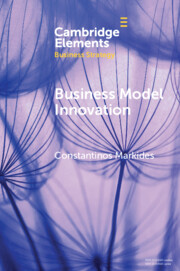Element contents
Business Model Innovation
Published online by Cambridge University Press: 31 May 2023
Summary
- Type
- Element
- Information
- Series: Elements in Business StrategyOnline ISBN: 9781108993241Publisher: Cambridge University PressPrint publication: 29 June 2023
References
- 9
- Cited by

